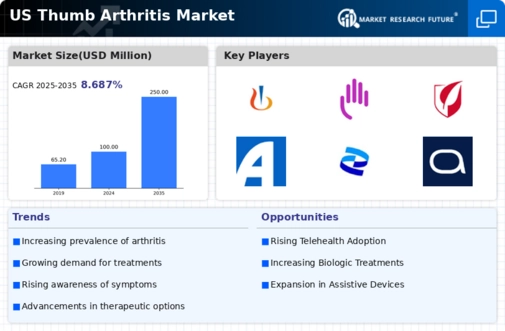The US Thumb Arthritis Market has been experiencing significant growth as awareness and diagnosis of the condition increase among the population. This market includes a variety of treatment options, from conservative management approaches like physical therapy and medications to more invasive surgical interventions when necessary. A multitude of players are involved in this sector, presenting a competitive landscape characterized by a diverse array of products designed to alleviate symptoms and improve the quality of life for those affected by thumb arthritis.
Constant innovation and advancing technology are driving companies to enhance their offerings and compete more effectively, while collaborations and partnerships within the industry are becoming increasingly prevalent as firms seek to expand their market share and leverage combined expertise in research and development. In this competitive environment, Novartis stands out with a strong presence in the US Thumb Arthritis Market. The company has been known for its commitment to developing innovative therapies aimed at managing arthritis symptoms and improving patient outcomes.
Novartis has leveraged its extensive research capabilities and robust pipeline to address the needs of patients suffering from thumb arthritis. The strengths of Novartis in this market include its significant investment in research and development, allowing for the introduction of novel treatment options, and its established relationships with healthcare providers, which enhance the accessibility of its therapies. Through effective marketing strategies and a focus on patient education, Novartis has solidified its position as a key player in this competitive arena.
Merck and Co. has also made a notable impact on the US Thumb Arthritis Market by providing both pharmacological treatments and comprehensive solutions for arthritis management. The company boasts a diverse portfolio of products, including nonsteroidal anti-inflammatory drugs (NSAIDs) and disease-modifying antirheumatic drugs (DMARDs) that are critical in managing thumb arthritis symptoms. Merck and Co. strengthens its market presence through partnerships and alliances, which bolster their research efforts and enable the company to adapt swiftly to evolving healthcare needs.
The firm has also engaged in strategic mergers and acquisitions in the past, expanding its capabilities and assets to enhance its position in the arthritis treatment sector. With a commitment to innovation and an ongoing assessment of patient needs, Merck and Co. continues to play a key role in shaping the future of thumb arthritis management in the US market.



















